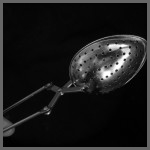True.
 Millions of people enjoy drinking tea, the second most consumed beverage on the planet. Until recently I had always been a heavy coffee drinker, but I had not given tea a try. Then one evening when I had a sore throat a friend recommended I try some throat-coat tea. I don’t remember exactly what type of tea it was, but it worked and I was hooked. I still drink 2 or 3 cups of coffee in the morning, but instead of continuing to drink coffee when I get to work, I now drink tea. I really love the variety of teas on the market. I’m more of a fruity / flavored tea drinker, the two flavors I have in my office right now are “Wild Berry Zinger” and “Pomegranate Pizzazz”. I spent some time on the internet investigating whether there is health benefits associated with drinking tea and found hundreds of proposed benefits. Supposedly, tea helps with hydration, irritability, headaches, memory, cardiovascular disease, blood pressure, digestion, metabolism, immunity, the flu, cavities, arthritis, Parkinson’s and even bad breath! I then looked for something more scientific on the topic and found an article by Gupta and colleagues (2008) on the beneficial effects of tea published in the International Journal of Pharmacology. These authors sited over 200 references in their paper and discussed how tea has beneficial effects on cancer, skin health, cardiovascular disease, weight loss and even our nerves. The authors stated that “Research conducted in recent years reveals that both black and green tea have very similar beneficial attributes in lowering the risk of many human diseases, including several types of cancer and heart disease.” There are few if any downsides to drinking tea, some tea does contain caffeine, so be careful if you react negatively to caffeine. So, if you currently don’t drink tea, starting to would likely be a simple way to improve your health.
Millions of people enjoy drinking tea, the second most consumed beverage on the planet. Until recently I had always been a heavy coffee drinker, but I had not given tea a try. Then one evening when I had a sore throat a friend recommended I try some throat-coat tea. I don’t remember exactly what type of tea it was, but it worked and I was hooked. I still drink 2 or 3 cups of coffee in the morning, but instead of continuing to drink coffee when I get to work, I now drink tea. I really love the variety of teas on the market. I’m more of a fruity / flavored tea drinker, the two flavors I have in my office right now are “Wild Berry Zinger” and “Pomegranate Pizzazz”. I spent some time on the internet investigating whether there is health benefits associated with drinking tea and found hundreds of proposed benefits. Supposedly, tea helps with hydration, irritability, headaches, memory, cardiovascular disease, blood pressure, digestion, metabolism, immunity, the flu, cavities, arthritis, Parkinson’s and even bad breath! I then looked for something more scientific on the topic and found an article by Gupta and colleagues (2008) on the beneficial effects of tea published in the International Journal of Pharmacology. These authors sited over 200 references in their paper and discussed how tea has beneficial effects on cancer, skin health, cardiovascular disease, weight loss and even our nerves. The authors stated that “Research conducted in recent years reveals that both black and green tea have very similar beneficial attributes in lowering the risk of many human diseases, including several types of cancer and heart disease.” There are few if any downsides to drinking tea, some tea does contain caffeine, so be careful if you react negatively to caffeine. So, if you currently don’t drink tea, starting to would likely be a simple way to improve your health.
Reference:
Gupta J, Siddique Y, Beg T, Ara G, Afzal M: A review on the beneficial effect of tea polyphenols on human health. International Journal of Pharmacology (2008), Vol 4, pps. 314-338.
